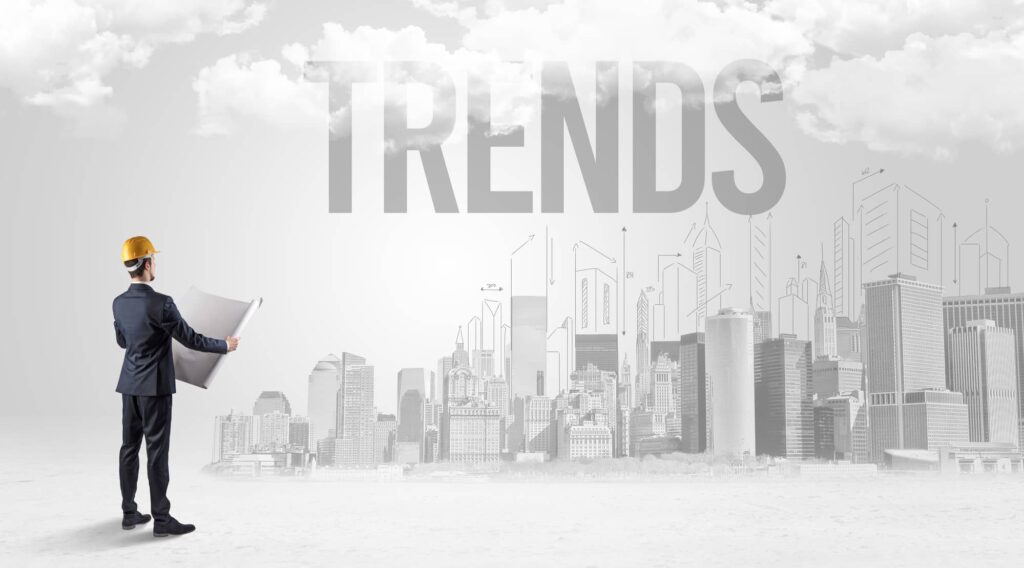
As with any new year, there are new trends and preferred ways of completing work. In 2020, with the onset of the global COVID-19 pandemic, the operation of industry experienced countless unprecedented changes.
The construction industry saw the rise of remote working, social distancing enforcements, the reallocation of resources, and the disruption in supply chains. Some expected trends in commercial construction may change when the new year turns around. However, these are the 2021 trends predicted for commercial construction.
Biological Construction Materials
Also known as living materials, biological compounds can be advantageous over their conventional counterparts for various reasons. They are made from bacteria and fungi, which means that they are self-growing.
Self-mending concrete can help self-fill cracks and fissures. This can aid the maintenance needed for concrete structures significantly. Thus, it reduces the long-term costs of a building.
Safety
Health and safety have always been a primary concern in the construction industry. But, since the added concerns of COVID-19, employee safety has taken new precedents. Social distancing measurements, protective gear, and cleanliness protocols will all aid this.
On a construction site, staggered shifts and cooperation by employees can help with social distancing. Safety protocols will include protective gear. For example, hand sanitizer, masks, and measures specific to the construction work at hand.
Instead of sharing items, each worker should label their belongings and limit them to their personal use.
Remote Technology
The construction industry has one of the fastest-growing adoptions of drones and this is only set to increase in the future. This is because they allow for new dimensions of remote work and improved safety on construction sites.
The aerial view of construction provides contractors with invaluable information. Things like potential safety issues can be identified easily by looking at the aerial view of the site.
3-D Printing
The use of 3-D printing can produce buildings and components at a fraction of the price and time than commercial construction methods.
This type of printing has contributed to the success of many large scale housing developments. In addition, it may play an important role in realistically addressing housing crises in many circumstances.
Artificial Intelligence in Construction
Artificial intelligence (AI) has the ability to reduce construction costs. It also allows project managers and construction teams to set realistic project timelines.
AI can aid construction software solutions including simulations and other analyses, such as stress testing. This can serve as a powerful tool to promote safety – reducing onsite injuries and deaths.
Modular Construction
The use of modular construction involves manufacturing building components off-site. These are then transported and assembled at the site of the construction.
The benefits of the construction method include:
- reduced project costs and timelines
- greater certainty in the price and quality of the infrastructure
Supply Chain Alternates
Supply chain disruptions in 2020 forced companies to seek alternative suppliers and purchase materials at increased costs. This trend may continue in 2021 and cause contractors to re-evaluate current and future business relationships.
Although this may be a risky and tedious process, it may provide a greater sense of security in the long-term. New contracts between parties are expected to include escalation clauses to account for unforeseen costs in the future.
BIM Expansion
Design technology provides the means to design and construct structures in virtual space. The technology has existed for many years, and its popularity is expected to increase in the future. Building Information Modeling (BIM) is quickly replacing CAD by recreating the design and production process.
For builders, the use of BIM can be extremely valuable. It irons out many of the issues relating to the design before construction starts. These may include possible issues with coordination and buildability, as well as difficult connections.
BIM has seen a move towards cloud-based as well as 4D, 5D, and 6D functionality. This is expected to increase both the accessibility and technical performance of modeling.
Moving Away From New Equipment
Many construction companies are expected to continue renting or buying previously used equipment instead of purchasing new merchandise. This strategy allows companies to remain up to date with the latest machinery trends while reducing costs.
Renting equipment provides construction companies with the opportunity to test machinery and estimate their payoff. This way, they can make more informed buying decisions about whether they should purchase the equipment at a later stage.
Rented equipment is often kept in good conditions with the latest software updates. This means that companies won’t compromise on the value of their equipment.
Final Thoughts
Although it is not possible to truly predict the future, observing the trends of previous years can get us on the right track for the next ones. From BIM to 3D-printing and more, the construction industry is seeing many new developments that help to optimize all processes throughout all phases of construction.
